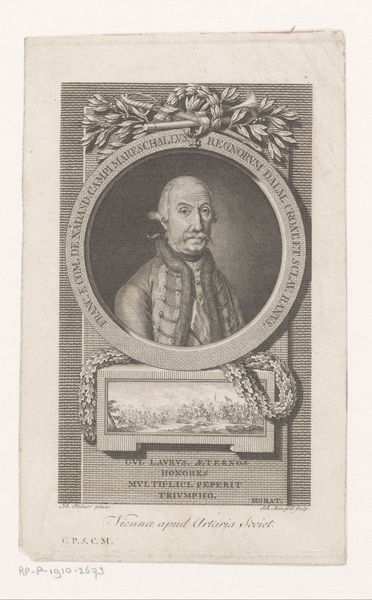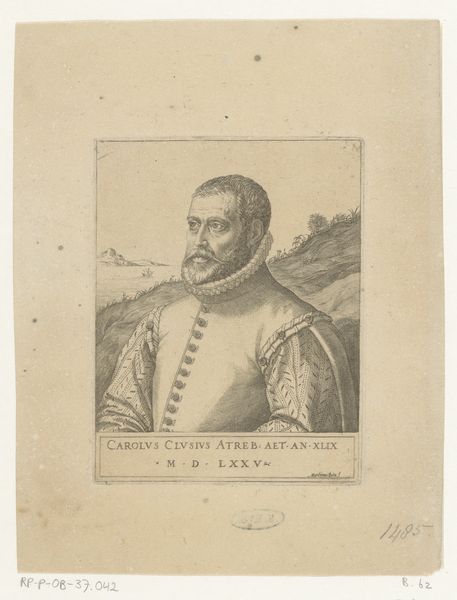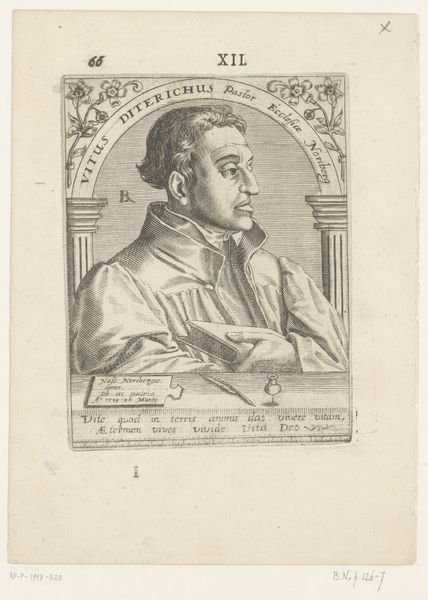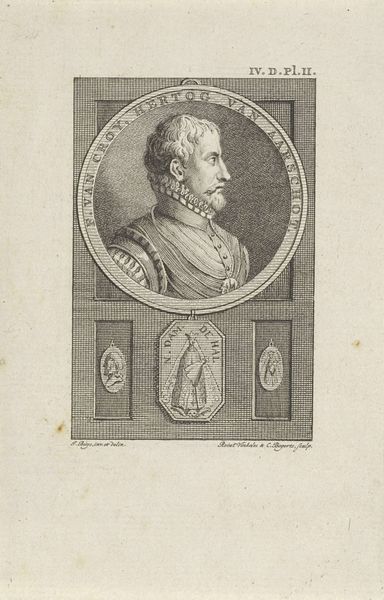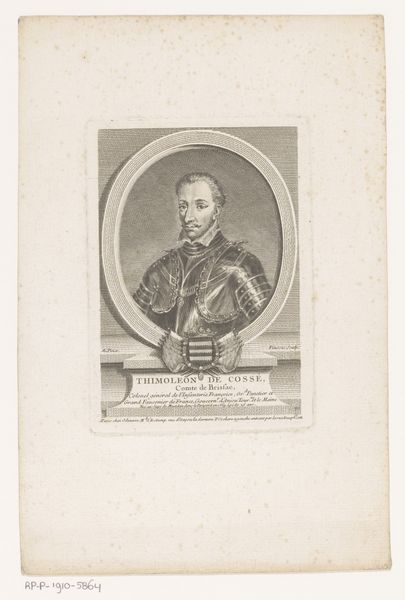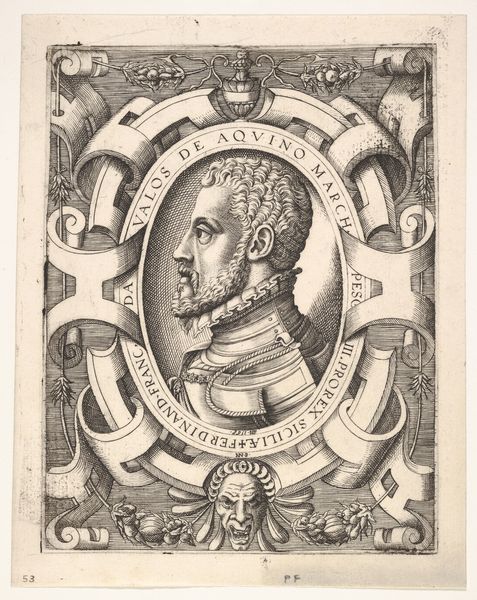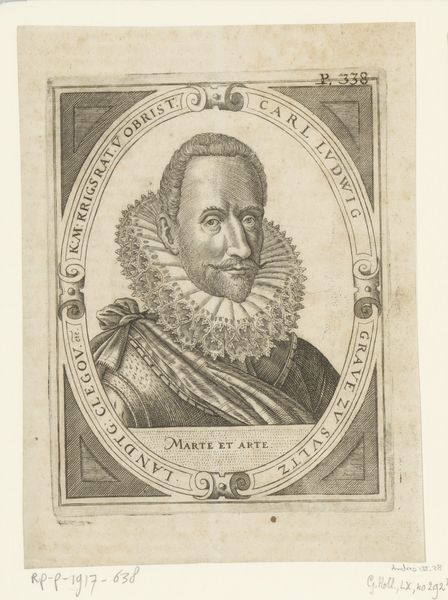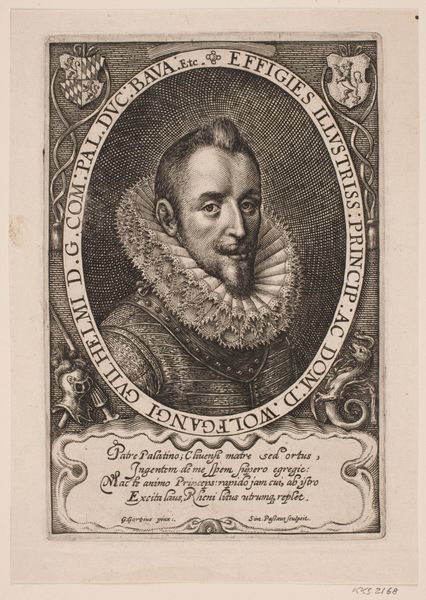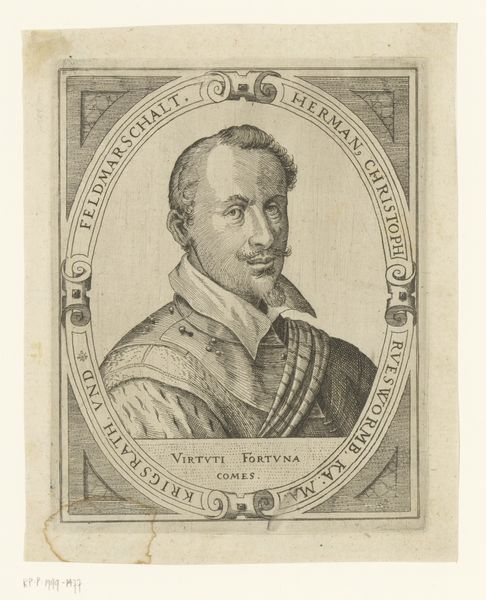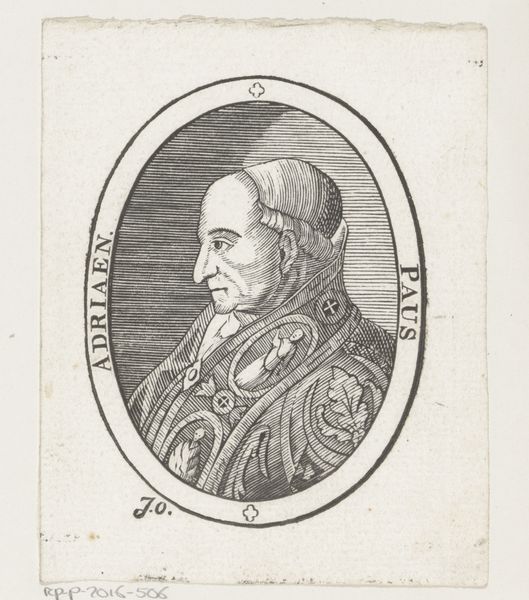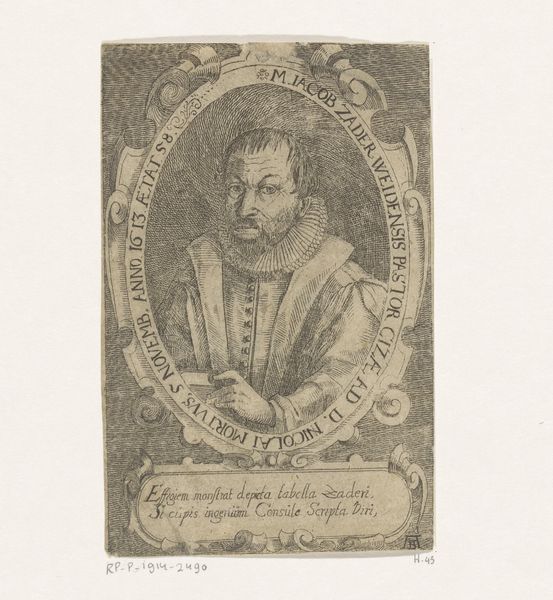
engraving
#
portrait
#
medieval
#
book
#
old engraving style
#
caricature
#
11_renaissance
#
portrait drawing
#
history-painting
#
engraving
Dimensions: height 137 mm, width 107 mm
Copyright: Rijks Museum: Open Domain
Curator: Here we have Robert Boissard’s "Portret van Paul Skalich," an engraving from the late 16th century currently held in the Rijksmuseum collection. The subject is framed in an oval border, and a printed inscription forms the rectangle in the lower quarter of the piece. Editor: My immediate impression is one of intense scrutiny, almost caricature. The strong lines accentuate Skalich’s features, especially around the eyes, and create a memorable, if slightly unnerving, image. Curator: The use of line is certainly deliberate. The hatching creates tonal variation and three-dimensionality, adhering to principles of chiaroscuro to model form. Note also the contrast of the ornate decoration framing Skalich’s face against the clean, almost austere rendering of the portrait itself. This juxtaposition amplifies Skalich's gaze, doesn’t it? Editor: I’m particularly drawn to the choice of engraving as the medium here. Consider the engraver's tools—burins, needles. They physically cut into the metal, demanding precision and control. Each line represents labor, not just artistic intention, but the skilled craftsman shaping the material to Boissard's design. The material tells as much a story as the subject's likeness. Curator: Agreed. And this ties in with the purpose of such prints in that period; widely disseminated portraits of noted scholars spread both knowledge and ideas. Boissard's control over the medium and design creates a potent, enduring image that persists through time. Editor: Precisely. What appears formal and somewhat rigid to modern eyes reflects its very construction. It is the product of material constraint, skillful craft, and the intent to circulate a very particular image of Paul Skalich. The act of its making emphasizes his social and intellectual position. Curator: By observing its sharp linear constructions and the portrait composition, one sees that Skalich's personality and status come through powerfully and thoughtfully. Editor: Yes, through attention to those very acts of creation. It helps us unravel not just who Paul Skalich was, but also the values and production techniques that shaped his historical persona.
Comments
No comments
Be the first to comment and join the conversation on the ultimate creative platform.

